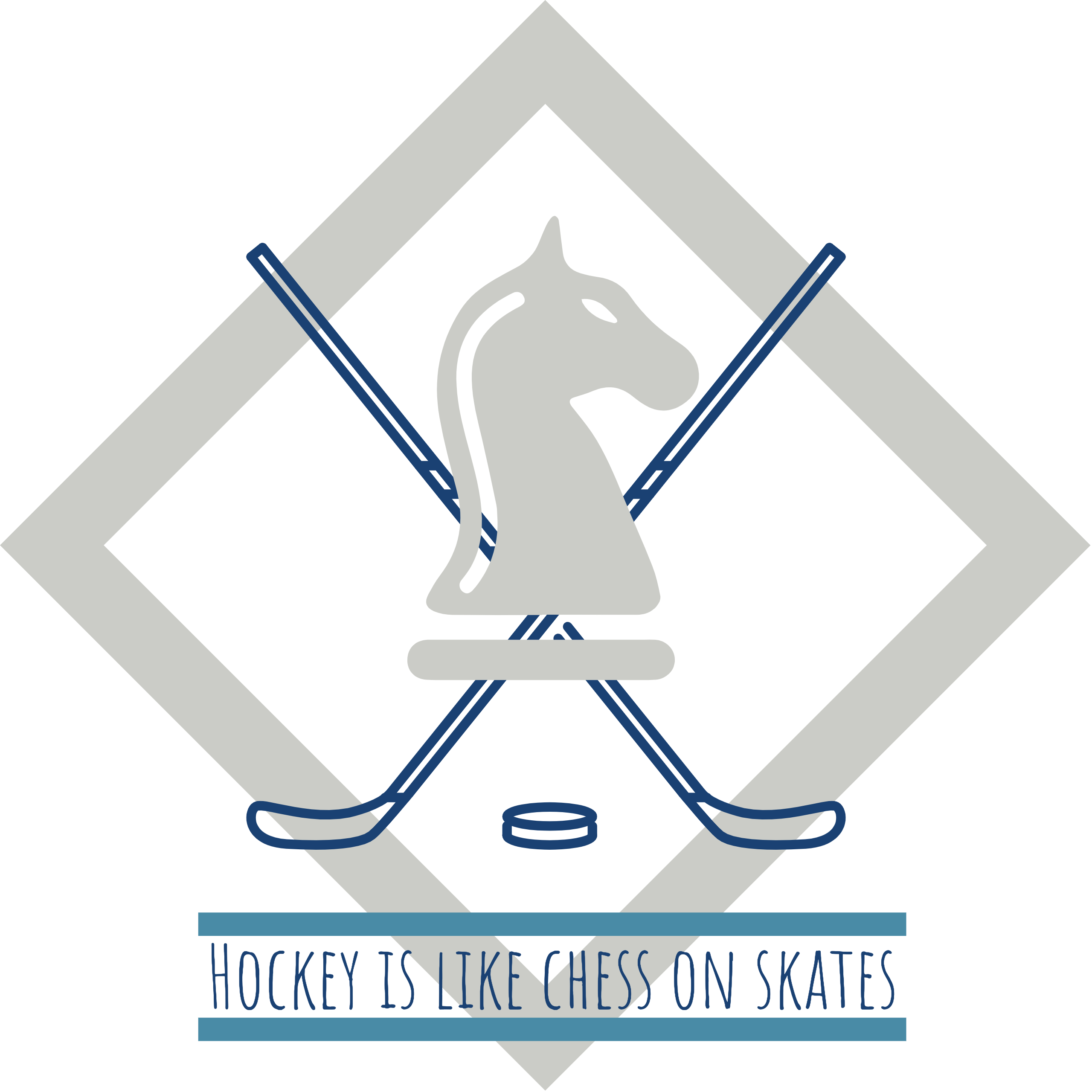“Pinching at the other team’s blueline is highly effective if it works, but if it does not, failure turns into a great offensive opportunity, often 2 on 1 for them”
DEFENSIVE ZONE – DEFENDING THEIR BLUELINE PINCH
A “blueline pinch” is usually done by a defenceman at our blueline at the boards skating hard down to the half boards or higher when the defenceman thinks he can stop our player with the puck or when our player is about to get the puck, from passing or carrying the puck out himself. The primary job of their defenceman is to keep the puck in their offensive zone and keep it from getting past their defenceman at the blueline. Their defenceman may sometimes be able to actually get to the puck first, sometimes a 50-50 puck battle ensues, and sometimes their defenceman does not get there in time.
There are 2 basic pinches at our blueline by the opposition:
- The strong side pinch, that is, along the boards on the side the puck is on
- The weak side pinch, that is, along the boards on the other side the puck is on
The strong side pinch is harder for their defenceman to execute on his own particularly when our winger is at the half boards or higher and their defenceman anticipates the puck coming to our winger as he starts to skate down the boards to execute the pinch. The risk/reward of this type of pinch may range from 100-0, 75-25, to 50-50, to 25-75 depending on the space between the 2 players and size and skill sets of the players involved. Also, there isn’t much time for their high forward to read what their defenceman is doing and support his pinch by getting behind him at the blueline. The latter is the preferred and safe play for them.
The weak side pinch is easier for a defenceman to execute as it usually arises from a reverse rim pass along the boards behind our net to our winger at the half boards on the weak side giving their defenceman much more time to get to the puck ahead of or at the same time as our winger. This weak side pinch also gives their high forward in their offensive zone more time to react to support their pinching defenceman by getting behind him at the blueline in case the pinch fails.
Now, how do we make it harder for them to successfully pinch on the strong side if they do not have their high forward supporting past the blueline:
- Have our winger lower than the half boards so their defenceman has to travel further to have any chance of a successful pinch
- Have our winger lower than the half boards face their defenceman, anchor his stick to the boards to gain quick full possession of the puck if it is rimmed and chip the puck past the pinching defenceman, or cross ice pass the puck between their 2 defencemen to our weak side winger cutting across, or alley-oop the puck over their pinching defenceman
- Have our winger lower than the half boards face away from the boards to get the pass from our defenceman on his stick and enable another pass out past their pinching defenceman
- Have our winger at the half boards chip or deflect the puck sideways to our centre beside him far enough away from their pinching defenceman so he can’t stop the pass
- Win the 50-50 puck battle with the pinching defenceman with help from our centre
Now stopping the weak side pinch is more difficult: the best way to do this is for the weak side winger to see the weak side rim developing by watching our strong side defenceman with the puck start to position his body to make the weak side rim pass. Our weak side forward seeing this skates hard to just lower than the half boards on the weak side and receives a hard rim pass from our strong side defenceman before their weak side defenceman has time to get to where our weak side winger is at the half boards.
Many teams pinch all the time on either side expecting the high forward (F3) to always make the right timely decision to support the pinch. In my experience this eventually breaks down due to the high forward joining in the puck battle at the half boards when he should not or simply failing to get back above our blueline in time to replace their pinching defenceman. And even if their high forward executes his support perfectly, that means a forward has to take on the duties of a defenceman if we get the puck 2 on 2, or 3 on 2. Favours us.
